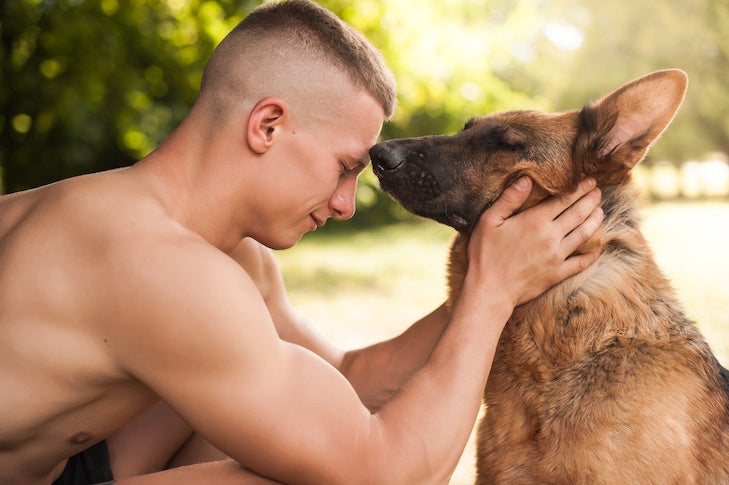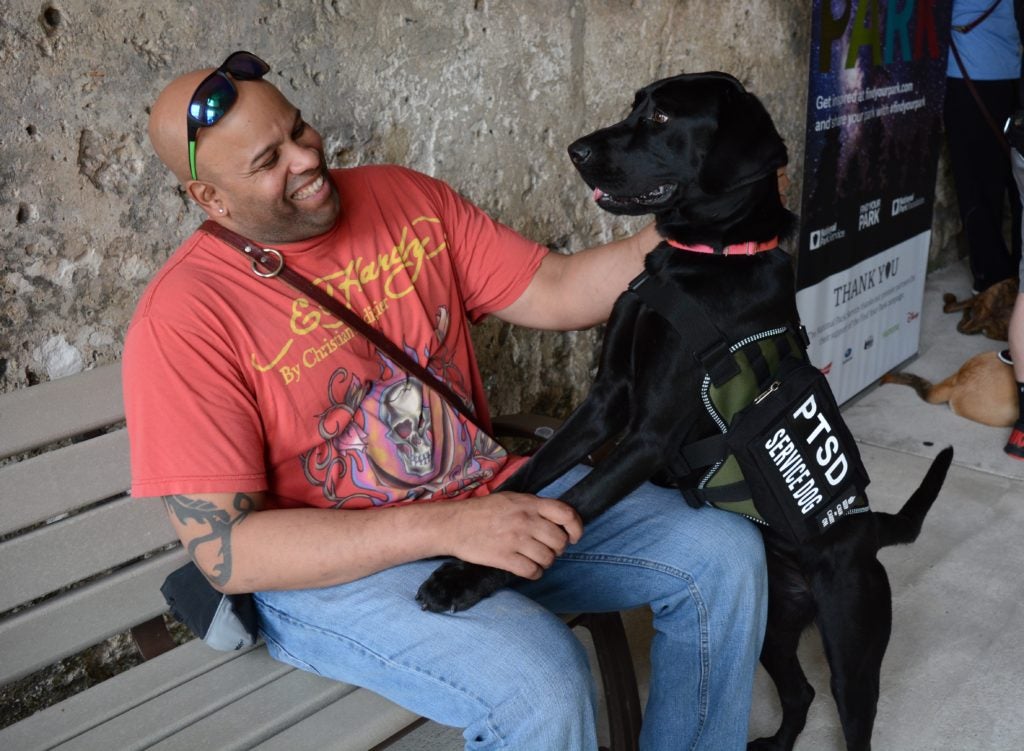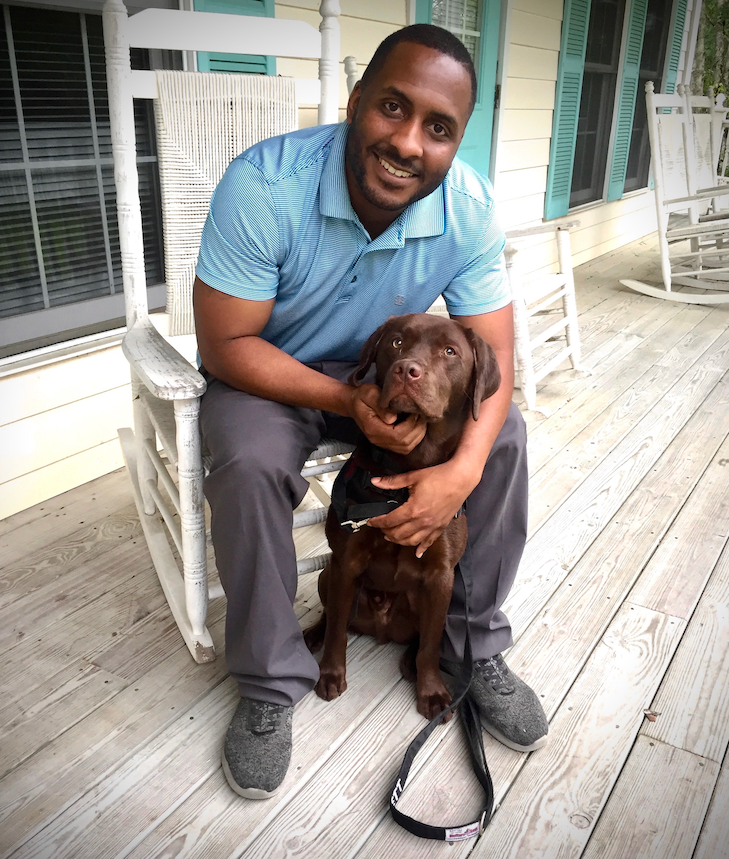
Many of us say that our dogs are our best friends, but for some people, they’re the key to a better life as well.
For veterans, service dogs provide more than just emotional support, especially for people dealing with post-traumatic stress disorder (PTSD) and traumatic brain injury (TBI). Specialized service dogs not only perform specific tasks that not only help with these conditions, but recent studies show that they can also reduce the amount of medication some veterans require for treatment and alleviate their overall symptoms. That’s why U.S. Senator Deborah Fischer has introduced a bill to fund service dog programs for veterans diagnosed with PTSD or TBI. This bill can effectively give these veterans a new lease on life.
What Does the PAWS Bill Call For?
The Puppies Assisting Wounded Servicemembers Act of 2021 (PAWS) bill, S. 951, sets up a grant program for service dog organizations that provide trained dogs to veterans suffering from PTSD or TBI. This bill and its companion bill, H.R. 1022, establish a three-year pilot program that’s administered by the Department of Veterans Affairs (VA).
Organizations and trainers accredited by Assistance Dogs International (ADI) or the International Guide Dog Federation (IGDF) would receive the grants—which are $25,000 or less. Grants would also be available for trainers and programs whose dogs meet the standards established by the Association of Service Dog Providers for Military Veterans, which requires passing several levels of AKC Canine Good Citizen (CGC) tests, in addition to performing tasks that help mitigate the veteran’s specific disability. To qualify for a grant, organizations must also have staff available who understand the unique needs of veterans with PTSD.
What Does the PAWS Grant Cover?
The grants provided by the PAWS bill wouldn’t just cover the costs of training a dog for veterans with PTSD or TBI. They would also pay for a lifetime of veterinary health insurance for the dog, service dog hardware, and payment for travel expenses needed for the veteran to acquire the dog.
“This is a fantastic step forward in helping veterans,” says Tom Coleman, Executive Director of Pawsitivity Service Dogs. “The VA covers service dogs for vets with other physical disabilities, but at this time, they won’t cover service dogs for PTSD.”

What’s Involved with Providing Service Dogs for Veterans?
Finding or breeding, training, testing, and pairing an appropriate dog with a veteran is a costly and time-consuming process. According to Sheila O’Brien, Chair of Assistance Dogs International North America and Special Advisor to America’s VetDogs, training and care for potential service dogs can range from $30,000 to $50,000. Initial training can take close to two years and then the veteran will need to continue training together with the dog, usually one to two times per week for up to another year or more.
“Training includes work on general manners, scent training with samples of stress hormones collected from the veteran to alert them when the client becomes anxious, public access training, and specific tasks that are tailored to the veteran,” says Michelle Nelson, CPDT-KA, Ph.D. of Paws Assisting Veterans (PAVE). After pairing a dog with a veteran, PAVE offers lifelong follow-up with unlimited training and advice. “We also do yearly home visits and re-accreditation testing for all working teams,” she says.
All veterans paired with service dogs must be receiving the care of a mental health professional and interview with the service dog organization as well, says O’Brien. This helps them determine if the dog is the right fit. Because the process is so involved and expensive, most organizations who rely on donations have a waiting list for dogs that can last up to three years. This is why the PAWS bill is so important, because it can help them get more dogs to veterans who need them.
How Do Service Dogs Help Veterans?
“Service dogs are trained to perform tasks that directly mitigate a person’s disabilities,” says O’Brien. This is in accordance with the Americans With Disabilities Act (ADA). And these disabilities include any “physical or mental impairment that substantially limits one or more major life activity.”
Veterans with PTSD suffer from a number of conditions including hypervigilance, depression, anxiety, suicidal thoughts, and night terrors. “Turning on a light switch when entering a dark room, pulling the covers off of a bed or nudging the bed to wake them during night terrors, standing in front or back of them to give them space in busy settings, and shaking hands with strangers to help them socialize are all tasks that service dogs can perform,” says O’Brien. These tasks help them feel better and get them back out into the world.
Additionally, those with TBI can suffer from physical disabilities that service dogs can assist with including balance issues, mobility issues, and everyday tasks like opening doors, retrieving items, and pressing an emergency button to call for help. Service dogs can also alert veterans to increased anxiety before the handler is aware and place their chin on a veteran’s leg, lap, or chest to ground them, says Carolyn Barney CNWI, CPDT-KA Training Director at Operation Delta Dog.

How Have Service Dogs Changed the Lives of Veterans?
Service dogs are literally and figuratively opening doors for veterans, allowing them to socialize, go back to work, and even travel. Unlike emotional support animals who don’t go through the rigorous training process that service dogs do, these dogs are always well-behaved and allowed by law into most places that other dogs are not, like the workplace.
“One of our early veterans who could barely come to a meeting due to anxiety has become a veteran advocate and passed legislature in Massachusetts to help veterans needing immediate medical attention—often for suicide—when the VA was not available,” says Barney.
A veteran who America’s VetDogs paired with a service dog had his life changed when that dog helped alleviate his night terrors, balance issues, and hypervigilance. Never a fan of public speaking, he now regularly speaks on behalf of the organization, says O’Brien.
Another veteran, Peter Bannon, served as a combat infantryman, including tours in both Iraq and Afghanistan. “Performing duties in service to his country has left him with severe PTSD,” says Coleman. Pawsitivity Service Dogs paired him with a black Labrador Retriever named Daniel. “Peter reports that, after training with Daniel, the relationship has made it possible for him to spend time in public and in his workplace with increased security and confidence.”

